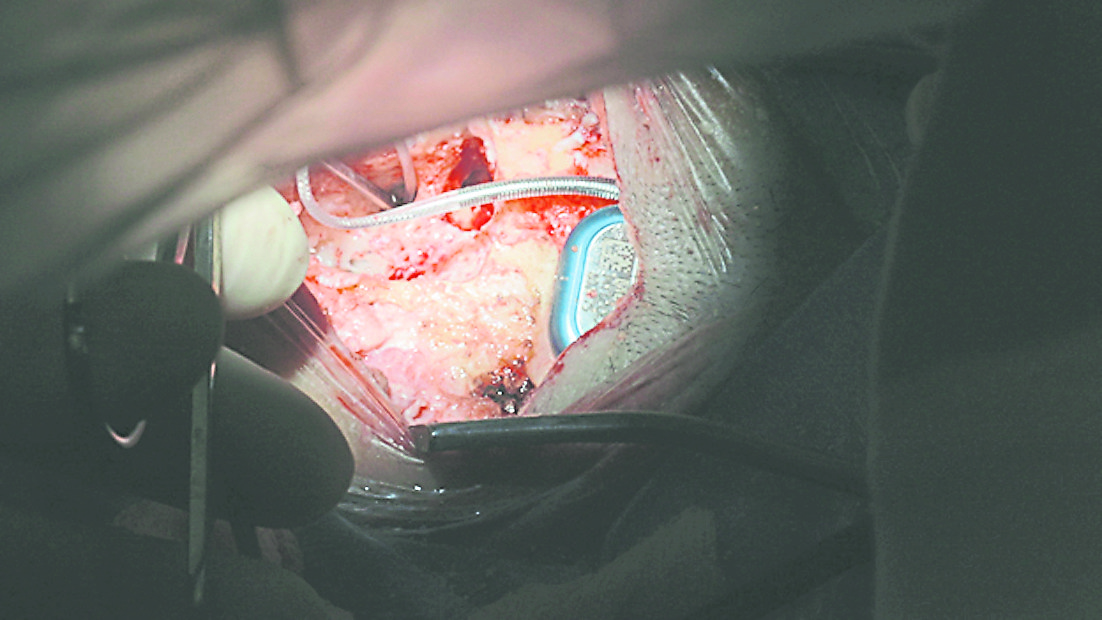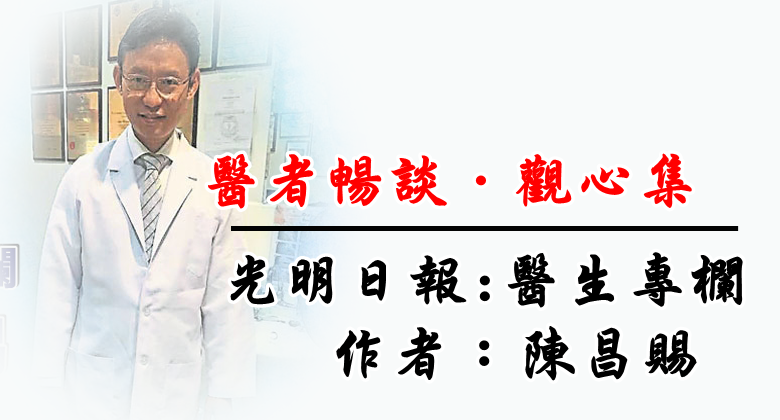【Local medical care】Functional optimization and smaller size

Text: Yang Qianni Organizer: Liang Yingxiu
The cochlear implant is a special sound energy-electric energy conversion electronic device. The electrode wire connected to the implant will enter the cochlea, bypass the hair cells and directly send electrical signals to stimulate the auditory nerve, thereby transmitting the nerve signals to the brain center, allowing The patient regains a new “voice”.
Consultant Ear, Nose Throat and Head and Neck Surgery
Dr. Zheng Yingping
(Dr Tang Ing Ping)
(Kuala Lumpur) Hearing impairment can be divided into 3 types according to the location of the lesion, namely conductive (conductive) hearing impairment, sensorineural (sensorineural) hearing impairment, and mixed hearing impairment. However, whether it is conductive hearing loss caused by outer ear and middle ear disorders, or sensorineural hearing loss caused by inner ear cochlear hair cells and auditory nerve damage, hearing aids are the first-line treatment for hearing reconstruction.
Mild hearing loss without hearing aids
Hearing aids are like a loudspeaker, able to amplify weak sounds to a level that suits the needs of the human ear. There are many types of hearing aids at present, depending on the severity of the hearing impairment of the user, the one that meets their own needs can be used. Generally speaking, people with mild hearing impairment do not need to wear hearing aids, while those with moderate, severe and profound hearing loss will need additional help.
Dr. Tang Ing Ping, Consultant of Otorhinolaryngology and Head and Neck Surgery at Sarawak General Hospital, gave an example that tympanic membrane perforation can cause conductive hearing loss. After undergoing surgical treatment to repair the tympanic membrane, the lost hearing can be restored from 50% to 65%. , but the patient still permanently loses 35% of his hearing. At this time, he can wear a hearing aid as hearing compensation.
Another example, hearing loss in the elderly is usually due to sensorineural hearing loss due to the decline of inner hair cells in the cochlea. In this case, their binaural structure is normal, so just using a well-fitting hearing aid can help.
“If the patient has used the hearing aid with the highest amplification, but still can’t hear the sound, other hearing aids are needed, such as cochlear implants (cochlear implants) or auditory brainstem implants (Auditory Brainstem Implants, ABI). “
He said that a cochlear implant is a special sound energy-electric energy conversion electronic device, which can be divided into two parts: implant and audio processor. As shown in Figure 1, the electrode array connected to the implant will enter the cochlea, bypass the hair cells and directly send electrical signals to stimulate the auditory nerve, thereby transmitting the nerve signals to the brain center, allowing the patient to regain a new life. “Voice”.
Cochlear implants are generally used for hearing-impaired patients with cochlear hair cell disease, but the premise is that the auditory nerve and brain function are normal, otherwise it is like a road with roadblocks that cannot pass through, so it will not work.
“Another condition is cochlear ossification, which is particularly common in meningitis-deaf patients,
Although the patient’s auditory nerve was intact,
But as the soft cochlea hardens like bone,
We couldn’t put the wires in there,
So the implant needs to be placed deeper,
The cochlear nucleus of the brainstem. “
“In fact, the principles of cochlear implants and ABI are similar, the same is to directly stimulate the nerve cord to rebuild hearing. The two also use the same set of devices, the difference is that the electrode wire of ABI is placed in the brainstem, not in the brainstem. The cochlea in the inner ear, so the wire design will be a little bit different.”
The implant requires no battery replacement
In addition, cochlear implants can be implanted bilaterally, while ABI only places one implant, which also requires the cooperation of ENT surgeons and neurosurgeons. Other candidates for ABI include those who had had to undergo acoustic nerve resection due to bilateral acoustic neuromas.
“The history of cochlear implants does not exceed 50 years. Thanks to the development of technology, today’s cochlear implants are constantly upgraded. In addition to the optimization of functions, the size of the external voice processor is also getting smaller and smaller.”

The picture above shows a set of cochlear implants. It can be seen that the voice processor has an ear-hook type and a “wireless” integrated type. The latter contains magnets and can be directly attached to the skin behind the ear.
“The voice processor is responsible for collecting external sounds, and then sending them to the implant under the skin, stimulating the auditory nerve through the electrode wires, allowing the user to produce hearing. As long as it is taken off, the appearance of the user is the same as that of ordinary people, and it can also be used when wearing it on weekdays Hair covered.”
He pointed out that in the past, a battery could only maintain the operation of the speech processor for 5 to 7 days, but today’s batteries are rechargeable. As for the implanter, there is no need to replace the battery, and it can generally be used for a lifetime unless it is damaged by an accident or a large impact. Whenever this point is mentioned, patients will feel very worried. In fact, the implant is not as fragile as imagined, and it will not be damaged by a small collision.
cochlear implant waterproof lightning protection
Many patients will ask the doctor, since the cochlear implant is made of metal, will it be dangerous when lightning strikes? In fact, he explained that there is no scientific basis for this. For example, the rings that many people like to wear are also metal, and they will not worry about being “struck by lightning” on rainy days, so there is no need to worry. The cochlear implant itself is also waterproof, so users have no problem bathing or swimming.
“Basically, the cochlear implant can be used for life, and the voice processor can be replaced according to the situation. Maybe the technology will improve in the future, and the voice processor can be improved into an in-ear type, and the research and development company will ensure the improvement At the same time, the internal and external devices can be used together continuously, I believe this will not be a big problem.”

takes 1 to 2 hours
low surgical risk
Cochlear implant surgery is not considered a major surgery and usually takes 1 to 2 hours to complete. However, not all otolaryngologists can perform this operation, and there are only a handful of Malaysian doctors who are professionally trained and good at cochlear implantation.
First, the doctor will make a 3 to 4 cm incision in the skin behind the ear, creating a “pocket” between the muscle layer and the bone to place the implant. Next, we need to drill holes to delicately route the electrode wires into the cochlea through the round window (one of the openings from the middle ear to the inner ear). After the incision is sutured, there is no visible difference in appearance.
Surgery over 70 years old needs to be considered
Zheng Yingping pointed out that the risk of cochlear implant surgery is not great, such as the risk of general anesthesia, general bacterial infection or bleeding, etc., these can be solved. In addition, some people’s facial nerve is relatively close to the structure of the middle ear, which may cause some friction and damage during the operation, but this situation is relatively rare, and there may be only one in 1,000 cases, and it will usually heal after a few weeks.
Overall, cochlear implant surgery is a low-risk procedure, especially if performed by an experienced doctor. Unless the patient is older, such as over seventy or eighty years old, we need to think twice. Whether you suffer from chronic diseases such as high blood pressure or diabetes, as long as you have been checked and the condition is well controlled, you can have a cochlear implant at any age.


Wearing hearing aids will still cause hearing loss
Question 1. Why does my hearing still decline after wearing a hearing aid?
Answer 1. In fact, the problem is not that the hearing aids are good or bad, but that the hearing of the ears continues to decline. For example, the elderly who are hard of hearing can’t hear the higher frequencies at first, but as time goes by, they can’t even hear the lower frequencies clearly.
Therefore, the simple hearing aids worn at the beginning cannot continue to meet their own needs. If hearing aids are unable to function when the hearing loss is extremely severe, a cochlear implant is needed.
Cochlear Implantation for Severe Hearing Impairment
Q2. Do I need residual hearing for a cochlear implant to work?
Answer 2. Not necessarily. Because cochlear implants can avoid damaged cochlear hair cells and directly stimulate the auditory nerve. Usually, patients who need cochlear implants are extremely hard of hearing, basically unable to hear sound at all.
Rehabilitation is required for half to one year after surgery
Q3. Rehabilitation is required after cochlear implantation?
A3. Yes, our brains need to re-adapt due to the different way our sense of hearing is formed, and this requires the help of audiologists and linguists. Some patients report that after implanting the cochlear implant, they hear voices like robots talking, but after six months to one year of rehabilitation, there will be no problem.
Cochlear implant surgery costs 120,000
Q4. What is the cost of cochlear implant?
Answer 4. A set of cochlear implants is about 70,000 to 80,000 ringgits, and the cost of surgery can reach about 120,000 ringgits. In fact, if the patient is deaf in both ears, it is better to implant two sets of cochlear implants. I often compare the effect of cochlear implants like this: 1 plus 1 is not equal to 2, but 3; if 1 plus 0, it is still equal to 1. When the patient is in a noisy environment, he can still hear, and it is easier to identify the direction of the sound source.
Therefore, patients are generally advised to implant bilateral cochlear implants, if possible. In fact, some cochlear implant companies also offer discounts from time to time, such as buy one get one free, the price of the second set is lower, etc. In this way, the operation may be completed for RM150,000 or RM160,000.
1 to 2 years old treatment golden time
Q5. When is the best time to implant a cochlear implant?
Answer 5. The sooner the better, especially for newborns with congenital hearing impairment. Usually it is best to implant a cochlear implant between the age of 10 months and 1 year old, because 1 to 2 years old is the prime time for treatment, when the brain’s hearing and speech mechanisms are not yet connected, early treatment can make them more healthy. There is an opportunity through rehabilitation to be able to speak and listen like a normal human being.

![[Love Wants Sexual Happiness Series 358]Find the culprit and overcome psychogenic erectile dysfunction. Don’t let pressure affect your sexual happiness. [Love Wants Sexual Happiness Series 358]Find the culprit and overcome psychogenic erectile dysfunction. Don’t let pressure affect your sexual happiness.](https://webcdn.guangming.com.my/wp-content/uploads/2024/04/171111-780x420.jpg)

![[Wanqingyi Care]My health, my rights, customized medical methods in the last stage of life [Wanqingyi Care]My health, my rights, customized medical methods in the last stage of life](https://webcdn.guangming.com.my/wp-content/uploads/2024/04/ZZ1-100-780x420.jpg)
![[Kidney Transplantation Special Topic]The survival rate of transplanted kidneys is high without dialysis treatment three times a week [Kidney Transplantation Special Topic]The survival rate of transplanted kidneys is high without dialysis treatment three times a week](https://webcdn.guangming.com.my/wp-content/uploads/2024/04/1311-780x420.jpg)



